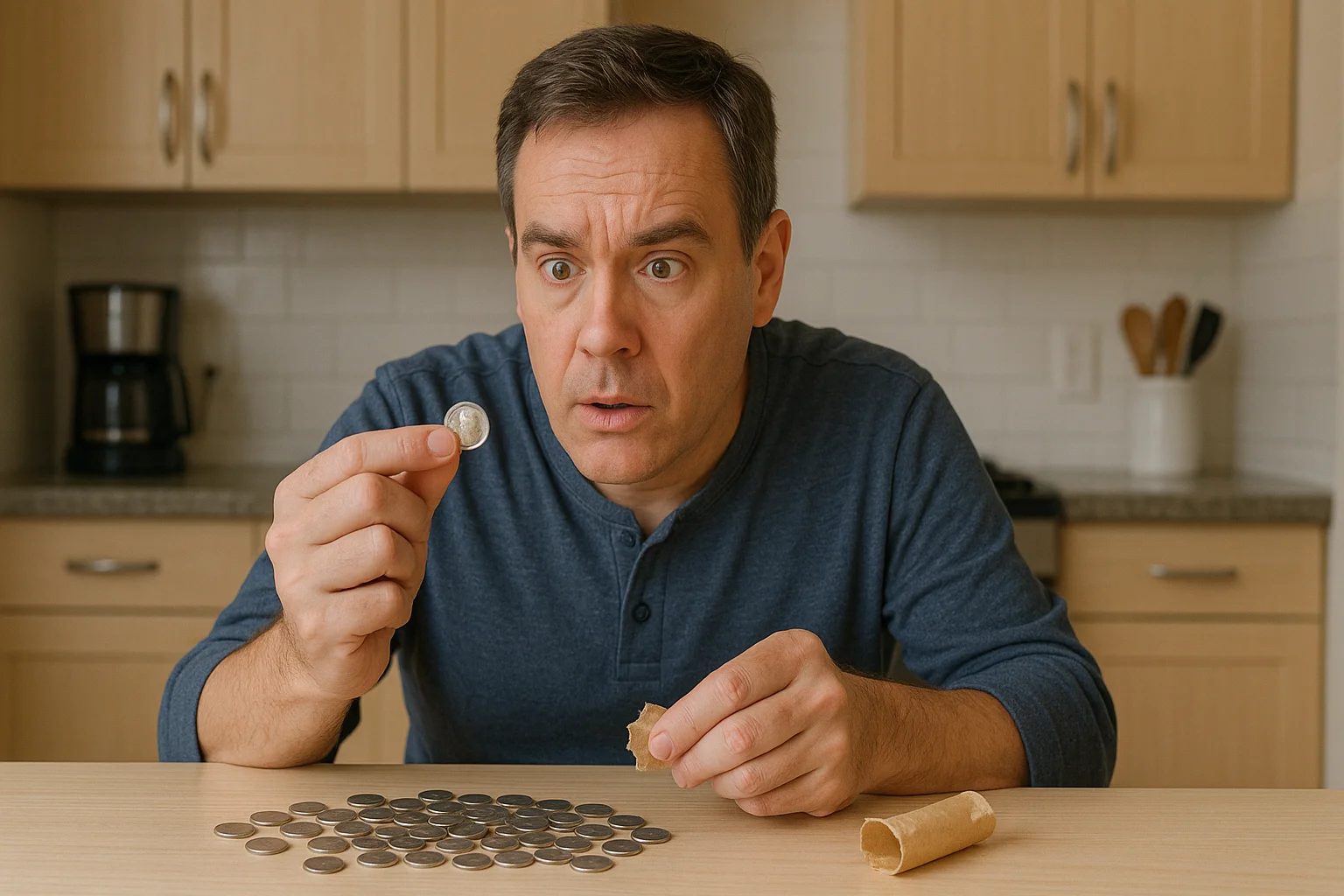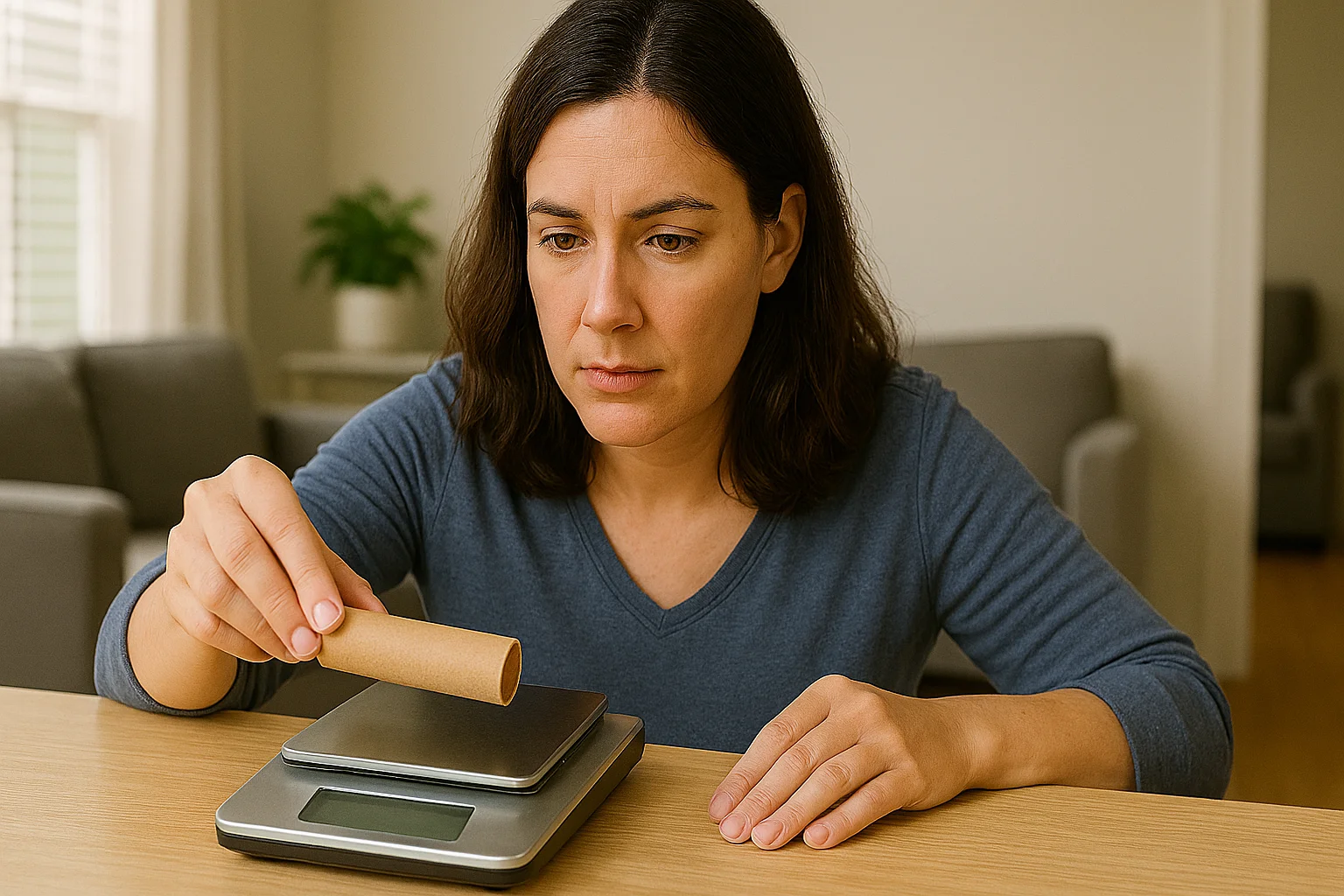If you’ve ever dumped out a pocketful of coins and found yourself thinking how many dimes in a roll, you’re not alone. Most people know the basics — coins go into wrappers, wrappers go to the bank—but few stop to consider the details. Why 50? Do they all weigh the same? Could there be something rare hiding inside that paper cylinder?
It turns out that coins (especially dimes) can hide surprising nuances of history and value. So if you’re a curious saver, a coin hunter, or just want to know if there’s a gem hiding in your change jar, this guide will answer questions you never thought you’d ask.
So, Really — How Many Dimes in a Roll?
Let’s get this out of the way: a standard roll of dimes contains 50 coins, totaling in face value. Actually, this number was the norm in the United States for decades, and it is part of a broader system of coin roll standards that include nickels, pennies, quarters, and beyond.
But why 50? The answer dates back to the 19th century when banks and the U.S. Mint needed a uniform way to package and distribute coins. Fifty dimes struck the right balance — easy to count, easy to carry, and worth enough to be practical for commercial use. Today, coin wrappers are color-coded and machine-packaged, but the structure remains the same.
Tip: Don’t always trust a sealed roll blindly. Some people have reported rolls that are short a few coins — or worse, padded with foreign coins that look similar but aren’t legal tender.

How Much Does a Roll of Dimes Weigh and What’s It Worth?
Here’s where things start to get more interesting — and a bit more technical. While a roll always contains 50 coins, the weight and actual value can vary significantly depending on what kind of dimes are inside.
Let’s compare:
| Type of Dime | Years Minted | Metal Composition | Weight per Coin | Roll Weight (approx.) | Market Value per Roll |
| Modern Clad Dimes | 1965–present | Copper-nickel | 2.268 grams | ~113.4 grams (4 oz) | $5 (face value) |
| 90% Silver Dimes | pre-1965 | 90% Silver, 10% Copper | 2.5 grams | ~125 grams (4.4 oz) | $80–$120 (based on silver) |
As you can see, older 90% silver dimes weigh more and are worth far more than modern copper-nickel ones — up to 15–25 times face value, depending on the spot price of silver.
Thus, if a dime roll feels heavier than usual, especially if it is from a bank or estate sale, you might want to investigate further. It could be packed with silver.
Collector’s Tip: Invest in a small digital scale. Weighing sealed rolls before opening them is a low-effort way to spot potential treasures—especially if you are dealing with large quantities.
What Kinds of Dimes Can Be Found in a Roll?
While most dime rolls are filled with standard modern coins, there is always a chance of something unexpected slipping in. Here’s a breakdown of what you might find:
- Modern copper-nickel dimes (1965–present): The most common. Worth face value unless in mint condition or with errors.
- 90% silver dimes (pre-1965): Roosevelt, Mercury, or even Barber dimes can appear — each worth much more than 10 cents.
- Error coins: Look for off-center strikes, double dies, clipped planchets, or rotated designs — some errors can fetch $50 to $500+.
- Proof coins: High-detail, mirror-finished coins made for collectors; rare but not impossible to find in circulation.
- Foreign coins: Occasionally show up in rolls as fillers or mistakes — interesting, though not always valuable.
- Damaged or cleaned coins: These may reduce value but are common in circulated rolls.
Fun Fact: A single 1964 silver dime in average circulated condition is worth $2 to $5 — and that’s just the entry point. Uncirculated examples can sell for more.
Quick Hack: Before turning in coin rolls at the bank or using a coin machine, scan a few coins using Coin ID Scanner. The app can help you instantly spot silver dates, historical background, degree of rarity and even approximate market value without needing expert-level knowledge.
Where Can You Get Rolls of Dimes — and What Should You Watch For?
So, you’re ready to get your hands on some dime rolls. But where should you look? While they are easy to find in theory, not all rolls are created equal — some are just loose change in disguise, while others might hold hidden treasures.
- Banks: The Most Common (and Sometimes Best) Source
Most people start at their local bank. If you have an account, many banks will happily give you rolled coins in exchange for cash. You might get machine-wrapped rolls directly from a central vault, or you might get customer-wrapped rolls, which can be more unpredictable — and often more exciting.
These customer rolls are where things get interesting. Since they may have been sitting in someone’s house for decades, they are more likely to contain older or unusual coins. It’s not unheard of for collectors to return rolls with silver dimes after cashing in a jar of coins.
Hack: Visit smaller, regional banks. Unlike big branches that constantly cycle coins, local banks sometimes hand out “old stock” that were not touched for years. That is where the good stuff can hide.
- Coin Shops: Curated Rolls (Sometimes for a Premium)
Coin dealers and shops also sell rolls—but these are usually pre-sorted and priced above face value. For example, you can find a roll of “junk silver” dimes from the 1950s or a mixed-date roll of Roosevelt dimes for $10–$15. They’re less of a gamble, but also less likely to surprise you with a rare find.
Some dealers sell mystery rolls or “unsearched” rolls, though these often come with a premium — and mixed expectations. Be cautious and check reviews if buying online.
- Coin Roll Hunting: A Hobby with Real Rewards
Coin roll hunting, or CRH, is the practice of searching through bank rolls to find silver, errors, or rare coins. It’s grown into a full-fledged hobby with online groups sharing tips, finds, and stories.
All you need to start is cash, patience, and a sharp eye. Some hobbyists even hunt hundreds of dollars’ worth of rolls weekly. While you might not strike it rich, the thrill is rea l— and so is the potential payoff.
Can You Find Valuable Coins in a Roll of Dimes?
The short answer? Absolutely. Dime rolls are like mini lotteries — most contain only face value, but a lucky few hide coins worth 10, 20, even 100 times more than their denomination.
What’s Considered “Valuable”?
Let’s keep it real: you’re unlikely to find a six-figure rarity. But you can stumble across:
- Silver dimes (pre-1965): Even in worn condition, they’re worth $2–$5 each
- Error coins: Off-center strikes, doubled dies, or clipped planchets
- Key dates: Some Roosevelt dimes from the 1940s–50s with low mintages
- Proof dimes: Rarely found, but they do surface in rolls returned to banks
For example, a 1982-P Roosevelt dime with no mint mark in good condition can sell for $50–$150, depending on grade. It’s not mythical — it exists, and collectors are always looking for it.
What to Watch For
You don’t need to be a professional numismatist to spot value. Keep an eye out for:
- Coins that look off — unusual edges, faded letters, extra thickness in design
- Dimes with a mirror-like surface (could be proof coins)
- Heavy or oddly shiny coins — might indicate silver or a plating error
- Anything that looks different from the rest of the roll
Pro Tip: Lighting helps. Examine your finds under natural or direct light — sometimes, a valuable coin shines just a bit differently.

How to Store, Sort, and Track the Dimes You Find
Once you’ve gone through a few rolls and spotted some interesting finds, the next question is: what now? Dumping everything back into a jar or drawer might work short-term, but if you are planning to continue collecting — or even casually tracking your discoveries — getting organized will make all the difference.
Storage Basics: Keep It Safe, Keep It Simple
Start with the essentials. For basic storage, coin tubes or small boxes labeled by year and type work well. If you’ve found silver or error dimes, you’ll want to keep them in individual coin flips (plastic holders) or cardboard 2x2s to prevent wear and tarnishing.
For long-term storage, avoid PVC materials, which can damage coins over time. Instead, opt for acid-free containers or albums specifically designed for numismatics.
Tip: Keep silica gel packs in your coin storage box to protect against moisture and oxidation.
Sorting and Labeling: Why It’s Worth the Effort
You can be a casual hunter or a future coin geek in the making, but labeling your coins helps. Use small stickers or notecards to mark dates, mint marks, and any observations — like “silver,” “off-center,” or “proof?”
You can also use a simple spreadsheet or a notebook to log your finds. Even better, use a Coin ID Scanner to scan and catalog what you’ve discovered. Trust us: after a few months, you’ll be glad you kept notes.
What Other Coins Come in Rolls — and How Do They Compare?
While dimes are great for beginners and experienced collectors alike, other denominations also come in standard rolls—and some can be just as rewarding to hunt.
Here is a quick comparison:
| Denomination | Coins per Roll | Face Value | Hunting Highlights |
| Pennies | 50 | $0.50 | High volume, lots of wheat cents, errors |
| Nickels | 40 | $2.00 | Potential war nickels (35% silver), buffs |
| Dimes | 50 | $5.00 | Silver finds, errors, compact size |
| Quarters | 40 | $10.00 | State/National Park series, silver |
| Half Dollars | 20 | $10.00 | High silver potential, fewer in circulation |
As you can see, each denomination has its perks. Pennies offer quantity, nickels hide silver surprises, and halves are beloved by silver stackers.
Collector’s Tip: If you are limited on budget, start with dimes or nickels — they strike a good balance between size, value, and potential return.
More Than Just Spare Change
Coin rolls might seem mundane at first, but they hold more than just small change — they hold history, mystery, and the possibility of discovery. One roll can lead to silver, errors, or just a deeper appreciation for the coins you pass around every day.
The best part is you don’t need expensive equipment or years of expertise. All you need is a few rolls, some curiosity, and maybe a flashlight or coin scale. So next time you visit a bank or crack open your coin jar, remember: every roll is a chance. A chance to learn, to collect, and — if luck’s on your side — to uncover something truly valuable.




